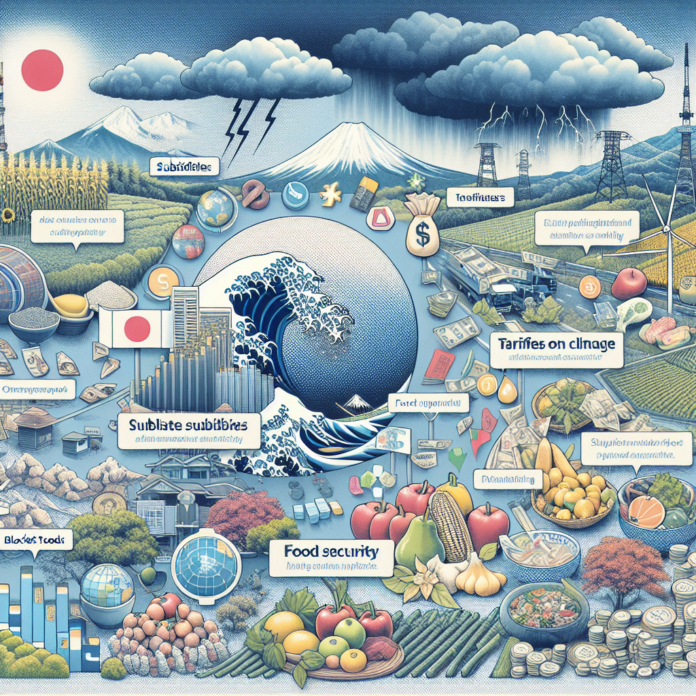Impact of Subsidies Tariffs and Climate Change on Japan’s Food Security
How Subsidies, Tariffs, and Climate Change Impact Japan’s Food Security
Japan’s food security is increasingly jeopardized by a complex interplay of subsidies, tariffs, and the pressing realities of climate change. As an island nation, Japan heavily relies on imports to meet its food demands, sourcing approximately 60% of its food from abroad. This dependence exposes the country to various vulnerabilities, including global market fluctuations, geopolitical tensions, and environmental challenges.
The Role of Subsidies
Subsidies play a significant role in shaping Japan’s agricultural landscape. The Japanese government provides financial support to domestic farmers to maintain agricultural production and ensure food security. However, these subsidies can distort market dynamics, making it difficult for local producers to compete with cheaper imported goods. While subsidies aim to bolster local agriculture, they can inadvertently contribute to inefficiencies and overproduction in certain sectors, leading to food waste and increased pressure on environmental resources.
Additionally, the focus on rice production—historically a staple in Japan—has led to the neglect of other crops that could diversify the agricultural sector. This narrow focus limits the resilience of Japan’s food system, making it more susceptible to shocks from both domestic and international markets.
The Impact of Tariffs
Tariffs are another critical factor affecting Japan’s food security. The country imposes tariffs on various agricultural imports to protect its domestic farmers. While this policy helps shield local agriculture, it can also lead to higher food prices for consumers. The high tariffs on certain staples can restrict access to diverse food products, forcing consumers to rely on a limited range of domestic offerings.
In recent years, Japan has engaged in trade agreements such as the Comprehensive and Progressive Agreement for Trans-Pacific Partnership (CPTPP) and the Japan-European Union Economic Partnership Agreement (JEPA). These agreements aim to reduce tariffs and foster trade, potentially increasing the availability of imported food products. However, the challenge remains to balance protection for domestic farmers with the need for affordable and diverse food options for consumers.
Climate Change Challenges
The looming threat of climate change further complicates Japan’s food security landscape. Rising temperatures, increased frequency of extreme weather events, and shifting precipitation patterns pose significant risks to agricultural production. Japan’s unique topography and climate make its agriculture particularly vulnerable to these changes, affecting crop yields and food quality.
Furthermore, Japan’s fisheries are at risk, as ocean warming and acidification disrupt marine ecosystems. The fishing industry is essential for Japan, both for food supply and cultural identity. Climate-induced changes to fish populations could lead to declines in fish stocks, further exacerbating food security challenges.
Strategies for Enhancing Food Security
To mitigate these risks and enhance food security, Japan must adopt a multifaceted approach. This includes investing in sustainable agricultural practices that promote resilience to climate change, diversifying crop production, and enhancing research and development in agricultural technologies. Strategies such as climate-smart agriculture can help improve productivity while minimizing environmental impacts.
Moreover, Japan can benefit from strengthening regional food systems and diversifying its food supply sources. By fostering partnerships with neighboring countries, Japan can enhance its food trade networks and reduce reliance on a limited number of suppliers.
In conclusion, Japan’s food security is intricately linked to the interplay of subsidies, tariffs, and climate change. By addressing these challenges through thoughtful policies and sustainable practices, Japan can work towards a more secure and resilient food future.


